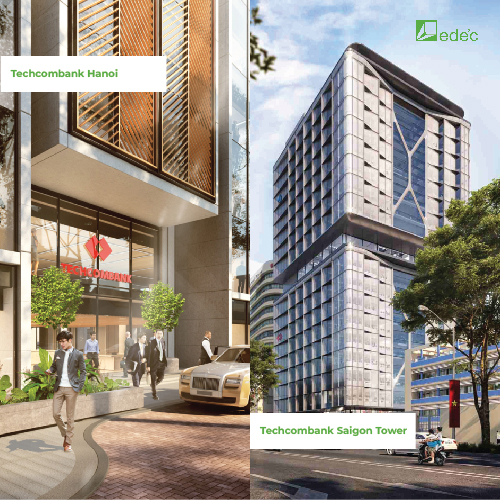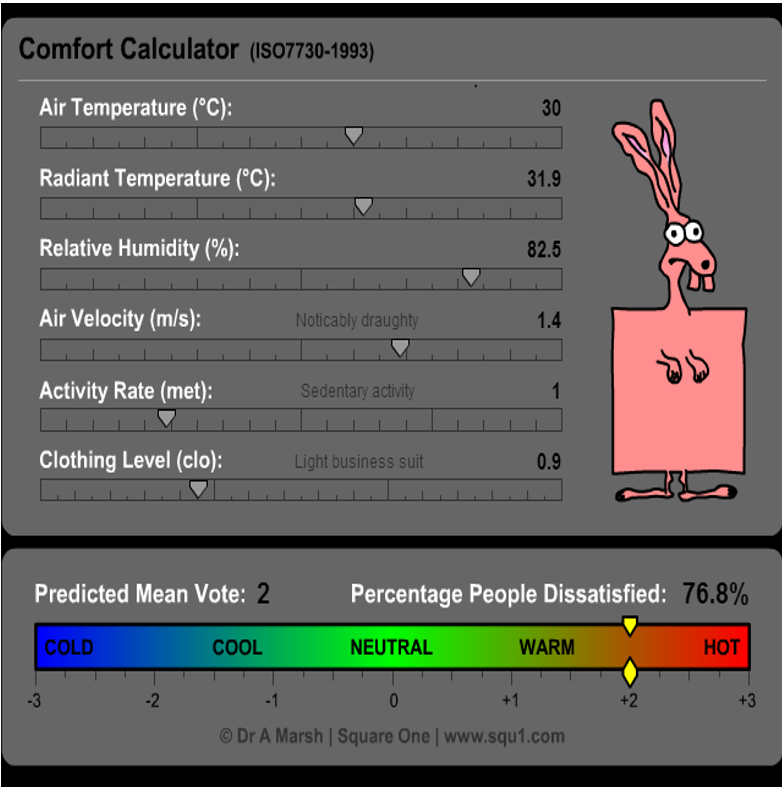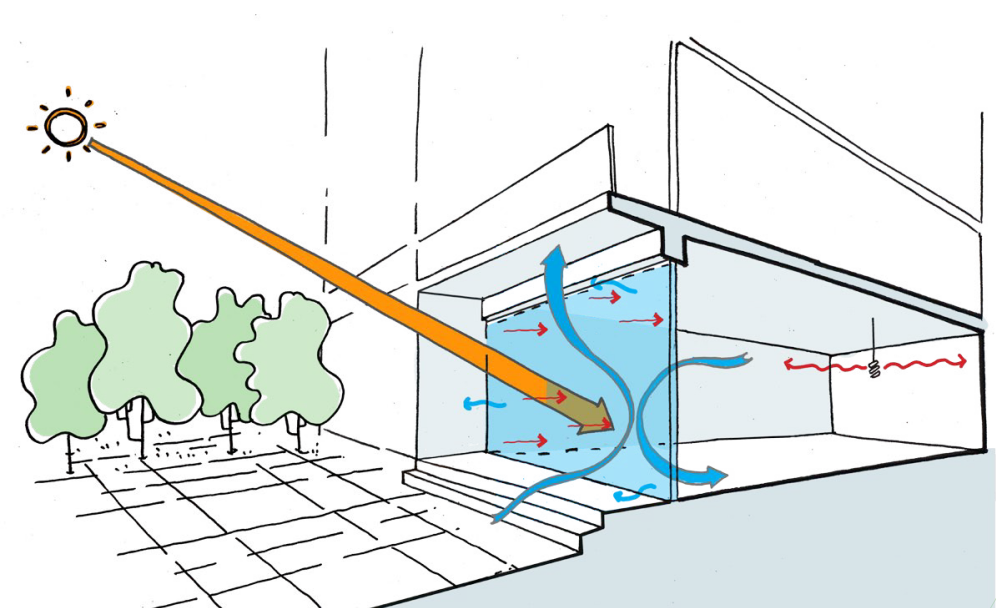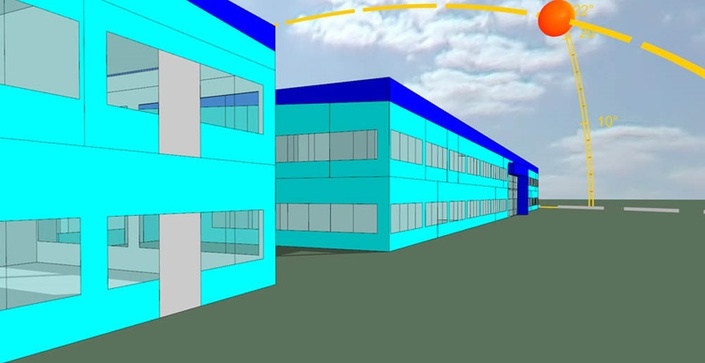RESOURCES
Efficient use of energy, thermal comfort – core issues in green building development

In developed countries, the issue of energy efficiency, related to energy security, was recognized very early. They proactively made laws and regulations on design to ensure the efficient use of energy, through codes and standards. These requirements must be fulfilled when submitting a construction permit application. Later, there is a trend of voluntary green building. However, the nature of compliance with the minimum energy requirements is already embedded in green rating systems. Therefore, saving energy, and complying with standards is still mandatory, and achieving a green certificate or not is voluntary. The article focuses on clarifying the issue: Green building development – The core issue must be an efficient use of energy and thermal comfort.
1-1. ENERGY EFFICIENCY – VIETNAM AND THE INTERNATIONAL CONTEXT
In recent decades, the Government of Vietnam has shown an increasing interest in energy efficiency across the country. Although there have been positive changes, the overall energy efficiency of the economy is still low compared to neighboring countries. To generate 1 USD GDP, we use 2.5 times more energy than the world average, 1.3 times more than China and India, 1.7 times more than Malaysia, 1.9 times compared to Thailand, 2.6 times that of the Philippines, 3.8 times of Japan, and 4.7 times of Singapore.
Therefore, improving the efficiency of energy use is very urgent to increase competitiveness and increase the efficiency of the economy.

The construction and building operation industry contributes significantly to the efficiency of national energy use, operating buildings accounts for about 35-40% of total electricity consumption in the country.
Some statistics and surveys published by the Ministry of Industry and Trade show that about 20-25% of energy is wasted in buildings. That is a waste of about 20% of 40% of total electricity, which is more than double renewable energy production by the end of 2020.
In developed countries, the issue of energy efficiency, related to energy security, was recognized very early. They proactively made laws and regulations on design to ensure the efficient use of energy, through codes and standards. These requirements must be fulfilled when submitting a construction permit application.

Later, there is a trend of voluntary green building, but the nature of compliance with minimum energy requirements has been incorporated into green rating systems. Therefore, saving energy, and complying with standards is still mandatory, and achieving a green certificate or not is voluntary. To simply understand, green certification systems have references to other industry standards and regulations, especially requirements for HVAC design (heating, air conditioning), thermal comfort, lighting, energy… Green buildings will require compliance with the above requirements in the form: they must exceed the minimum requirement by 3-10% as a prerequisite (if not, the certificate will be failed and no consideration is required for other criteria).

Lotus Certificate – With the base model being the minimum QC09:2017 compliant energy forecasting model

LEED scoring rules are more complicated than LOTUS, depending on the type of work, the reference standard is ASHRAE 90.1
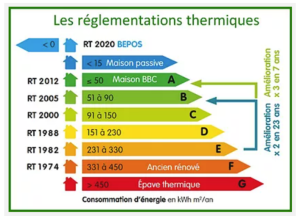 In France, the use of energy efficiency for buildings was introduced after 1973, when the oil crisis occurred. Currently, regulations on heat and energy are constantly being updated and tightened gradually according to the development trend of materials, technology, equipment… with the target towards positive energy buildings. That is, the total energy use in 1 weather cycle (1 year), that building generates energy, instead of consuming energy. To do this, the French building energy regulation (RT – Règlement thermique) has been continuously updated through many versions, currently, the latest version is RT 2020 – BEPOS – Batiment à énergie positive.
In France, the use of energy efficiency for buildings was introduced after 1973, when the oil crisis occurred. Currently, regulations on heat and energy are constantly being updated and tightened gradually according to the development trend of materials, technology, equipment… with the target towards positive energy buildings. That is, the total energy use in 1 weather cycle (1 year), that building generates energy, instead of consuming energy. To do this, the French building energy regulation (RT – Règlement thermique) has been continuously updated through many versions, currently, the latest version is RT 2020 – BEPOS – Batiment à énergie positive.
For a comparative perspective, Vietnam has had regulations on efficient use of energy since 2005 (QCXDVN 09:2005), so far there have been 2 additional adjustments (QCVN 09:2013/BXD, QCVN 09). :2017/BXD). But in practice, this standard is used as a voluntary standard, the verification of design documents and post-construction acceptance testing for QCVN 09 is almost non-existent. Thus, it can be estimated that the construction energy in Vietnam is almost equivalent to that of France in 1974 – so moving towards carbon neutrality by 2050 as committed by the Prime Minister at the COP 26 Global Conference will there is still a lot of work to be done. The important thing is that if we start implementing it now, we only have 30 years left, compared to France, they have been doing it fiercely for nearly 60 years with the goal of Net Zero Carbon by 2050. So this is not a simple race in the current conditions.
2-GREEN BUILDING DEVELOPMENT AND CURRENT CRITERIA (REQUIREMENTS) FOR ECONOMICAL AND EFFICIENT USE OF ENERGY
Where are we?

Currently, the demand for green buildings in Vietnam is increasing, especially in the South, which is a very positive sign for sustainable development. At the same time, there are also many cases of green buildings that are more communication and branding than they are to the environment or sustainable development. But regardless, the need for greener, more sustainable is real, the next issue is how we will realize it to increase economic and environmental efficiency, and at the same time enhance the country’s internal resources… avoid having to transfer money abroad to hire brains, to pay for green appraisals… This will sooner or later lead to dependency and when they leave, everything will be back to the way it was. Those problems are also a form of unnecessary waste that needs to be remedied early in the era toward zero energy.
It should be noted that when implementing a green building, energy-saving, cost-saving, comfort, and health for people always come first – these are the most real benefits for people, investors, and users. In developed countries, these problems are calculated by a team of architects, engineers, and detailed quantification of complex and technical calculations to optimize costs, allocate capital appropriately, etc. then described in detail by narration, with very long design documentation. This is essentially a process of sifting through many possible solutions to find the optimal one for the final design, especially in terms of investment and energy costs – regardless of whether the building is certified green or not. Thus, the work of green consultants in developed countries has been remarkably reduced.
Unfortunately, the above-mentioned technical works have been rarely done in Vietnam, the design descriptions are mostly the same, and only a few numbers have been corrected to match the work being done. Designing according to everyone’s separate work is quite common, even designing air conditioners according to a predetermined capacity on a predetermined area, regardless of the direction or heat quality of the building envelope, or how the lighting is calculated. Many calculated works of this type also receive green certificates, and investors have to pay a lot of extra costs to achieve more green points in addition to the core items mentioned above.
To ensure the essence of the design, the state management and project management from investors are very important. The design goal, the work order, the calculation method, the requirements for explanation and comparison of the solution… all need to be detailed in the design contract to ensure the core benefits of the investor – regardless of whether the work wishes to receive a green certificate or not. This is a new item like a blank sheet of paper that project management units in Vietnam should pay great attention to accompany the government in order to improve the quality of the work, save energy and costs thoroughly, and gradually move toward the goal of Net Zero Carbon in the future.
3- THE PATH TO NET-ZERO
To achieve the goal of reducing energy use and moving towards Net Zero Carbon in the Construction industry, it is necessary to involve the participation of many fields, in which science plays a key role, policies play a prerequisite role to promote (both voluntary and mandatory), green financial incentives, tax incentives from banks, the Ministry of Finance as a catalyst, construction density incentives, high floors, procedures from the Ministry of Finance Natural Resources & Environment, the Ministry of Construction also plays an important driving role in the development of energy-efficient buildings.
Another very important factor that is always mentioned in international conferences is international support, both in finance and technology – but we should not be too dependent on external factors. Learning from experience and absorbing technology is very necessary, but they come and go, the most important thing is that we receive self-control techniques, technology, and management to strengthen and promote internal resources.
At the moment, in my personal opinion, we are most lacking in human resources to implement energy-saving projects. The reason is that for a long time, the training system in Vietnam followed the Soviet trend and did not update the knowledge from the West when the Soviet Union dissolved. Most of the new design and calculation techniques that have been updated from the 1970s to the present in the world are rarely introduced or trained in Vietnam, especially in the calculation and forecasting of building energy use. The background knowledge about this is zero in Vietnam. We are separating from the flow of knowledge in this area of the world and urgently need updating and re-integration.

The commitment of the Prime Minister of Vietnam at the COP 26 Global Conference: Vietnam will develop and implement strong greenhouse gas emission reduction measures with its own resources, with cooperation and support from finance and technology transfer by the international community, especially developed countries, including implementing mechanisms under the Paris Agreement, to achieve net-zero emissions by 2050.

Here arose a question, why do we still have beautiful buildings, and still have international awards, but there is a shortage of manpower in the field of energy and environmental sustainability?
The answer is, that in the field of architectural design, Vietnam is doing well. The works are beautiful and impressive, bright spots appear a lot… but the design ground is generally low. The building can be beautiful, and impressive but thermal comfort, natural lighting, general lighting quality, energy usage, payback period calculation, carbon emission… sustainable development requirements haven’t been met. These tasks need to be solved in the sum of the design problem. To meet this, the role of engineers and technical personnel involved in the design is very important. However, this is an area that we are neglecting, as well as not properly and fully appreciate the role of science, technology, and the engineer in the overall design process. As a result, the work may be beautiful, but the investment is wasted on the technical system (excess to be sure), low heat quality and lighting, high energy usage, and unreliable system operation…
To overcome existing problems, the human resources of architects and engineers need to be upgraded with new design knowledge, need to know how to use design tools that have become an indispensable part of the world to meet new needs for sustainable development, human comfort, energy-saving, investment cost optimization…

From a policy perspective, in just the past 15 months, although the whole country has to fight against the epidemic, the Government has not forgotten to promote the mandatory nature of efficient energy use for buildings.
The revised Construction Law, Decree 15, Vietnam Architecture Orientation to 2030, Vision 2050, Circulars guiding construction design costs… are continuously introduced to tighten and promote design for energy, resource-saving, environmental friendliness, application of technology… Most notably, the Circular guiding new design costs has paved the way for additional costs for implementing construction information models, selection of energy-saving solutions, calculation of flow dynamics, environmental protection certification…
This is a good sign, which will open the door to new industries that are currently only emerging to serve the design of sustainable development, but can easily be lost if there is no timely adjustment from state policy.

Four important pillars of the real estate industry that we can quickly catch up with the world in terms of energy-saving, sustainable development, and ensuring our commitment to reducing emissions are Policy, People, Investors, and Engineering (materials, equipment, technology…).
Developing and promoting the above-mentioned four factors will contribute to bringing the real estate industry back to its right path: Greener, more sustainable, and more efficient, toward carbon neutrality in line with the Government’s commitment by 2050.

MSc.Architect Tran Thanh Vu – Edeec & ISSER

